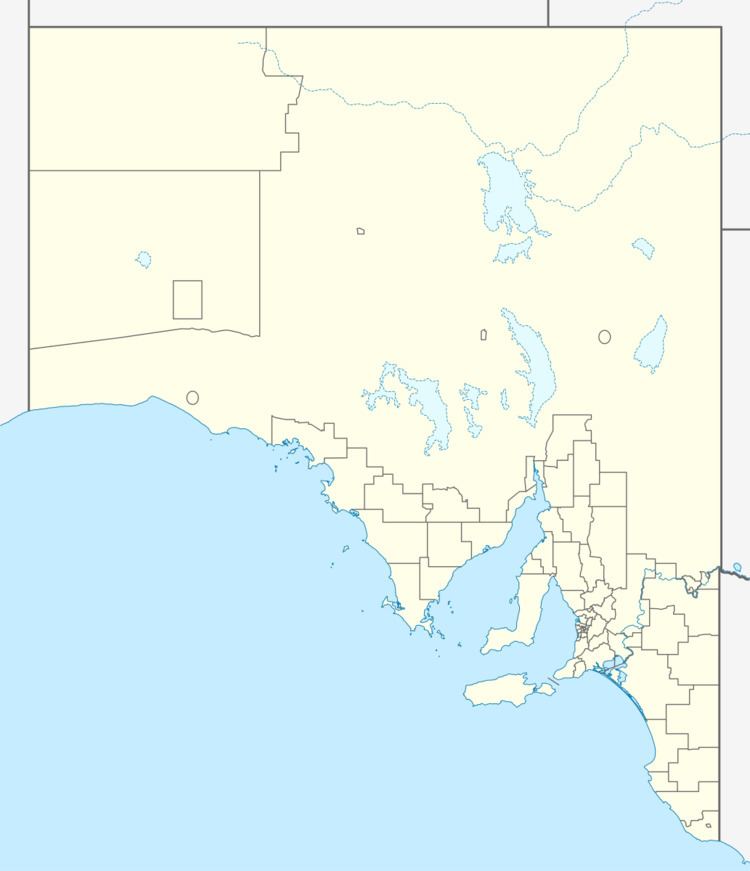Postcode(s) 5607 Mean max temp Mean min temp 22 °C 14 °C Postal code 5607 | Mean min temp Annual rainfall Elevation 15 m | |
 | ||
Lipson cove s little penguins face port spencer development threat
Port Spencer is a proposed bulk commodities port development project in South Australia, previously known as Sheep Hill. It is located on lower Eyre Peninsula, on the western shore of Spencer Gulf. The project was conceived by Centrex Metals Ltd for the export of iron ore from prospective iron ore deposits at Wilgerup and in the hills of Koppio on Lower Eyre Peninsula. The port project is dependent on the approval of the Fusion Magnetite Project, which is a joint venture partnership between Centrex Metals Ltd and Wuhan Iron & Steel (Group) Co, a Chinese government steelmaking enterprise. Pending mine and port project environmental approvals and adequate capital investment, the port would be built by Centrex Metals Ltd.
Contents
- Lipson cove s little penguins face port spencer development threat
- Location and transport
- Environmental approval process
- Development timeline
- Remaining approvals required
- Alternatives
- References
Location and transport
The site for Port Spencer is located at Sheep Hill and about 20 kilometres (12 mi) northeast of the town of Tumby Bay. The port could be served by a 27-kilometre (17 mi) narrow gauge branchline from Ungarra on the Eyre Peninsula Railway. Lipson Cove lies immediately to the south with the proposed wharf structure 1.5 kilometres north of Lipson Island Conservation Park.
Swaffers Road is marked to become a future haul road. The company's favoured method for the long-term transport of ore to the port is via a slurry pipeline.
A desalination plant capable of producing of 5-20 gigalitres of water per year will be required to provide the water necessary to transport the ore in a slurry to the Port Spencer site. Once the ore is dewatered, it would be loaded onto conveyors, along a 500-metre (1,600 ft) jetty and onto capesize bulk carrier vessels.
An alternative development announced in November 2013 could see the ore trans-shipped from a shorter jetty in barges, each carrying 15,000 tonnes. If such a method were to be employed, 12 barge-loads (round trips) would be required to fill a single capesize vessel, with a capacity of 180,000 tonnes.
Environmental approval process
The port development requires three stages of environmental approvals plus associated mine development approvals in order to proceed.
The development of Port Spencer also remains dependent on the advancement of the Fusion Magnetite Project, which requires its own environmental approvals at both State and Federal levels.
Development timeline
Remaining approvals required
As of 4 November 2013 Centrex Metals Ltd is yet to release its Stage 2 Public Environment Report (PER) for consideration and approval by the South Australian Government. This publication is expected to detail the company's plans to construct a reverse osmosis seawater desalination plant which will return waste brine to Spencer Gulf with elevated salinity. The brine return was considered by the federal government to be a potential risk to the fairy tern, which relies on nearby populations of bait fish in order to breed successfully. Lipson Island Conservation Park is considered to be suitable breeding habitat for the fairy tern, and historical sighting records exist for the area. If fairy terns are shown to utilise Lipson Island Conservation Park for breeding, the impact of desalination brine on distribution or abundance of available prey species could adversely impact their population.
Centrex Metals Ltd is yet to demonstrate that their desalination plant's brine outflow will not adversely impact marine biota.
Alternatives
Another iron ore mining company, Iron Road Ltd, has proposed a new port to be constructed at Cape Hardy, 9 km north east of the Port Spencer site. Andrew Stocks, CEO of Iron Road, has stated that only one port is likely to be built in the area.
